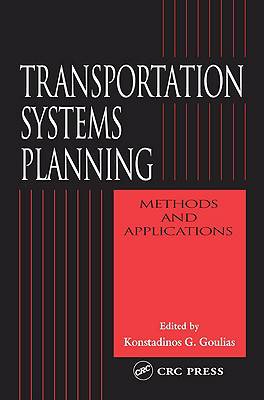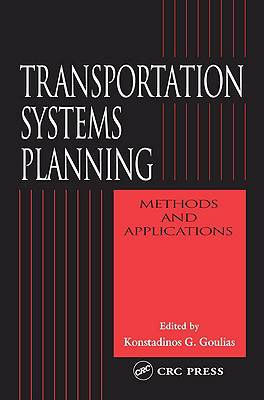
- Afhalen na 1 uur in een winkel met voorraad
- Gratis thuislevering in België vanaf € 30
- Ruim aanbod met 7 miljoen producten
- Afhalen na 1 uur in een winkel met voorraad
- Gratis thuislevering in België vanaf € 30
- Ruim aanbod met 7 miljoen producten
Zoeken
Transportation Systems Planning
Methods and Applications
€ 391,95
+ 783 punten
Omschrijving
Transportation engineering and transportation planning are two sides of the same coin aiming at the design of an efficient infrastructure and service to meet the growing needs for accessibility and mobility. Many well-designed transport systems that meet these needs are based on a solid understanding of human behavior. Since transportation systems are the backbone connecting the vital parts of a city, in-depth understanding of human nature is essential to the planning, design, and operational analysis of transportation systems. With contributions by transportation experts from around the world, Transportation Systems Planning: Methods and Applications compiles engineering data and methods for solving problems in the planning, design, construction, and operation of various transportation modes into one source. It is the first methodological transportation planning reference that illustrates analytical simulation methods that depict human behavior in a realistic way, and many of its chapters emphasize newly developed and previously unpublished simulation methods. The handbook demonstrates how urban and regional planning, geography, demography, economics, sociology, ecology, psychology, business, operations management, and engineering come together to help us plan for better futures that are human-centered. The text reviews projects from an initial problem statement to final policy action and associated decision-making and examines policies at all levels of government, from the city to the national levels. Unlike many other handbooks which are encyclopedic reviews, Transportation Systems Planning extends far beyond modeling in engineering and economics to present a truly transdisciplinary approach to transportation systems planning.
Specificaties
Betrokkenen
- Uitgeverij:
Inhoud
- Aantal bladzijden:
- 452
- Taal:
- Engels
- Reeks:
Eigenschappen
- Productcode (EAN):
- 9780849302732
- Verschijningsdatum:
- 26/12/2002
- Uitvoering:
- Hardcover
- Formaat:
- Genaaid
- Afmetingen:
- 183 mm x 260 mm
- Gewicht:
- 961 g

Alleen bij Standaard Boekhandel
+ 783 punten op je klantenkaart van Standaard Boekhandel
Beoordelingen
We publiceren alleen reviews die voldoen aan de voorwaarden voor reviews. Bekijk onze voorwaarden voor reviews.










